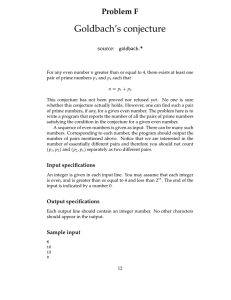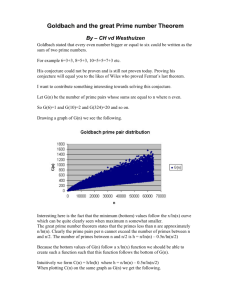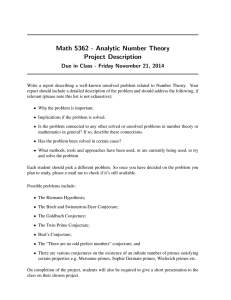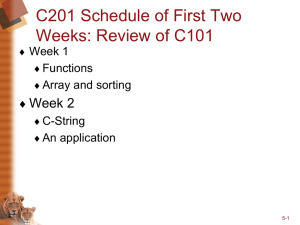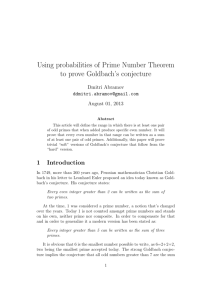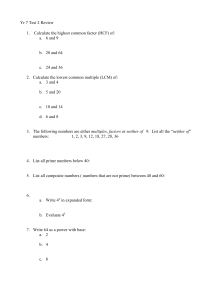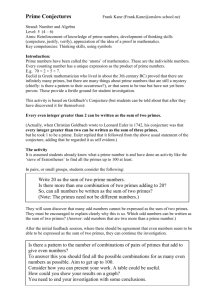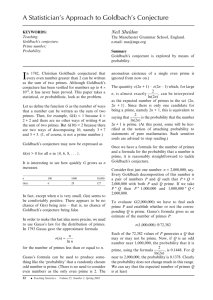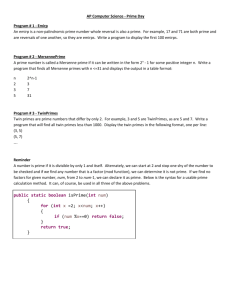Number Theory Worksheet 2 using BYOD
advertisement
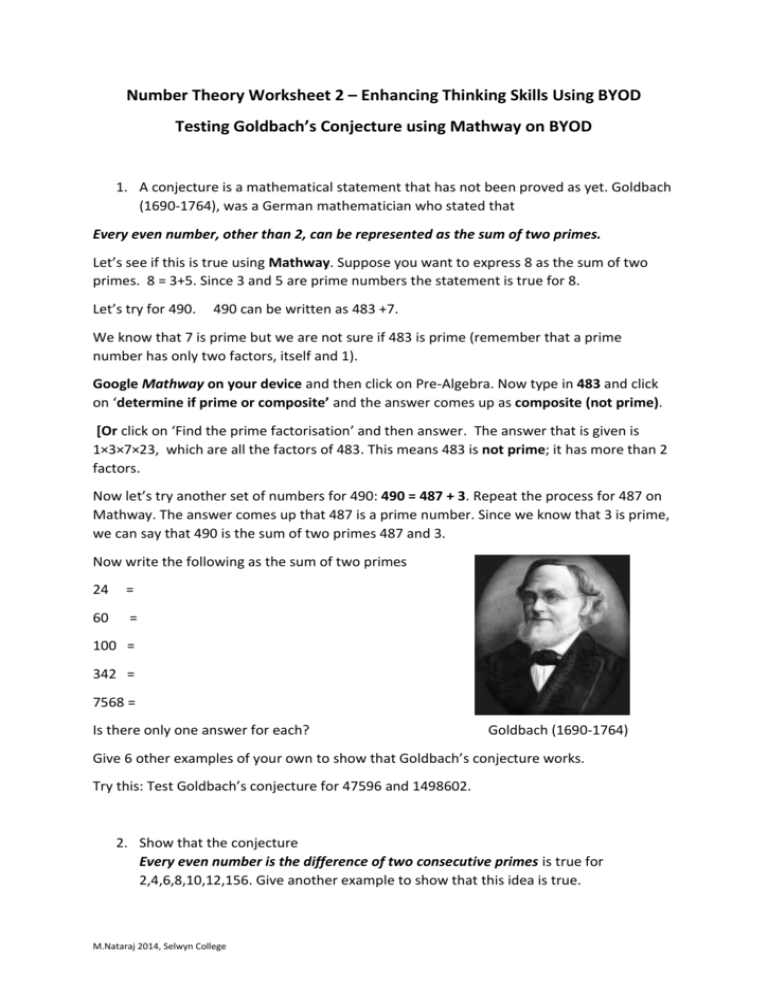
Number Theory Worksheet 2 – Enhancing Thinking Skills Using BYOD Testing Goldbach’s Conjecture using Mathway on BYOD 1. A conjecture is a mathematical statement that has not been proved as yet. Goldbach (1690-1764), was a German mathematician who stated that Every even number, other than 2, can be represented as the sum of two primes. Let’s see if this is true using Mathway. Suppose you want to express 8 as the sum of two primes. 8 = 3+5. Since 3 and 5 are prime numbers the statement is true for 8. Let’s try for 490. 490 can be written as 483 +7. We know that 7 is prime but we are not sure if 483 is prime (remember that a prime number has only two factors, itself and 1). Google Mathway on your device and then click on Pre-Algebra. Now type in 483 and click on ‘determine if prime or composite’ and the answer comes up as composite (not prime). [Or click on ‘Find the prime factorisation’ and then answer. The answer that is given is 1×3×7×23, which are all the factors of 483. This means 483 is not prime; it has more than 2 factors. Now let’s try another set of numbers for 490: 490 = 487 + 3. Repeat the process for 487 on Mathway. The answer comes up that 487 is a prime number. Since we know that 3 is prime, we can say that 490 is the sum of two primes 487 and 3. Now write the following as the sum of two primes 24 = 60 = 100 = 342 = 7568 = Is there only one answer for each? Goldbach (1690-1764) Give 6 other examples of your own to show that Goldbach’s conjecture works. Try this: Test Goldbach’s conjecture for 47596 and 1498602. 2. Show that the conjecture Every even number is the difference of two consecutive primes is true for 2,4,6,8,10,12,156. Give another example to show that this idea is true. M.Nataraj 2014, Selwyn College
